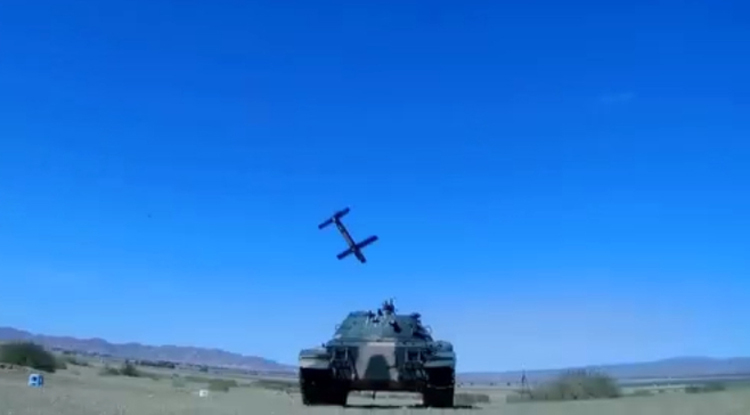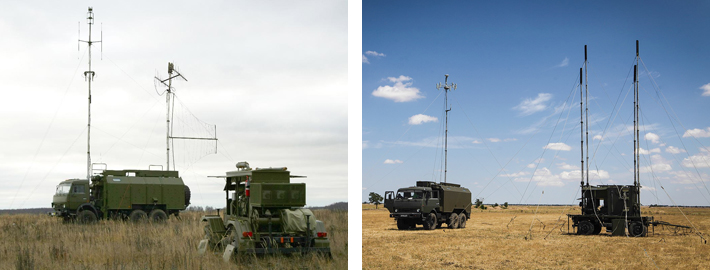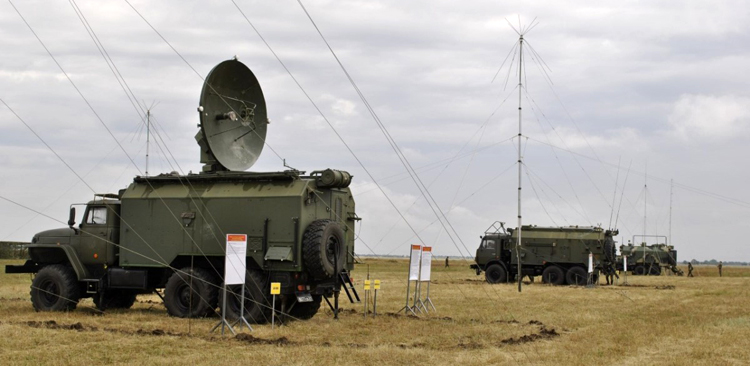INDIAN ARMED FORCES CHIEFS ON
OUR RELENTLESS AND FOCUSED PUBLISHING EFFORTS

SP Guide Publications puts forth a well compiled articulation of issues, pursuits and accomplishments of the Indian Army, over the years

I am confident that SP Guide Publications would continue to inform, inspire and influence.

My compliments to SP Guide Publications for informative and credible reportage on contemporary aerospace issues over the past six decades.
- Prime Minister witnesses 'Bharat Shakti' – a Tri-Services Firing and Manoeuvre Exercise in Pokhran, Rajasthan
- Interim Defence Budget 2024-25 — An Analysis
- Union Defence budget 2024
- Prime Minister Modi Commemorates Indian Navy Day in a Grand Ceremony
- Prime Minister Modi Flies in the LCA Tejas
- New Chapter in India-Italy Defence Ties
- Airpower beyond Boundaries
China's FH-901 and Russia's new EW System
The increasing importance of unmanned platforms, loitering munitions and electronic warfare is more that apparent in the Ukraine conflict. India will need to build these capabilities speedily to cope with and win future conflicts.
 |
The Author is Former Director General of Information Systems and A Special Forces Veteran, Indian Army |

In 2016, China unveiled a suicide drone named ‘CH-901’, which apparently has been rebranded as the ‘FH-901’ recently, and presented officially. It possibly incorporates some improvements over the CH-901. Earlier, the CH-901 was showcased by China in the SOFEX exhibition held in Jordan in 2018, revealing it was a suicide drone intended to combine the capabilities of a drone and a bomb and could hover for 40 minutes before swooping down on a target.
The FH-901 is a suicide drone – equivalent to America’s Switchblade drones supplied by the US to Ukraine for attacking Russian forces. On September 8, 2022, China’s state media Global Times released a video showing the FH-901 in live firing drills along with other unmanned aerial vehicles (UAVs) like the CH-4 and CH-5 reconnaissance drones. Global Times claims that the FH-901 loitering munition is a ‘brand-new’ rival drone to the American Switchblade.
The FH-901 is a fixed-wing UAV with a high-wing shape and a cylindrical fuselage. It is reportedly 1.2 meters long, with a top speed of 150 km/h, an operating radius of 15 km, and an endurance of 120 minutes. It can be equipped with a fragmentation charge or a shaped charge warhead capable of piercing 10 cm of armour and destroying tanks and light armoured vehicles. It is launched from a container and can be ready for action in less than three minutes.
FH-901 loitering munition is a 'brand-new' rival drone to the American Switchblade
In the aftermath of the Russians launching special operations in Ukraine, America had dispatched about 100 of its Switchblade drones to Ukraine and has promised another 300. The Switchblade is a kamikaze drone that can loiter over an area for 30 to 40 minutes before slamming into its target and detonating a small warhead. It has a camera and a warhead that is launched from a tube. It comes in two variants – the Switchblade 300 and Switchblade 600. The latter is heavier, has an anti-armor payload, and can penetrate tanks better.
In July 2022, Ukraine used the US Switchblade drones to launch an attack on the Troebortnoe crossing in Bryansk Oblast, Russia. The use of American Switchblade drones by Ukraine resulted in the Russians developing their own version of the American Switchblades – the LAOP-500 suicide drone or loitering munitions, developed by the Android Technology Research and Production Association, is a single-use UAV capable of hitting targets at distances up to 5 kilometers, remaining in flight for up to 20 minutes. It carries a payload of about 500 grams of TNT, which makes it possible to successfully hit targets in a fairly large radius.

Ukraine is now receiving drones of various types from NATO countries, and Turkey plans to build a UAV assembly plant on the territory of Ukraine. After the recent visit of Russian President Vladimir Putin to Tehran, Iran has begun supply of hundreds of combat drones to Russia for operations in Ukraine; which are reportedly capable of carrying ammunition for attacking radar stations, artillery and other military targets.
China follows the concept of swarm drones in deploying loitering munitions. In 2020, China conducted a test involving a swarm of suicide drones, including what resembled the CH-901 drone that can rapidly attack enemy maneuvering targets with spot-on precision. In 2021, China showcased its Feihong series of UAVs at the Zhuhai Airshow, including the FH-901 loitering munitions. It is, therefore, logical that China will deploy large-scale suicide swarm drones in any future conflict with India, given its production capabilities. We would need layered anti-drone deployment against such threat, as well our own swarms of loitering munitions for launching attacks and as deterrent.
It is logical that China will deploy large-scale suicide swarm drones in any future conflict with India
In the ongoing Ukraine conflict, Russia appears to be having the upper hand in the invisible domain of the Electromagnetic Spectrum, though exact Russian electronic warfare (EW) capabilities remain ambiguous. In June 2022, a Ukrainian intelligence official indicated that Russian jamming of GPS receivers on drones used by Ukraine to locate and direct artillery fire against Russian forces is intense. More interestingly, Ukrainian soldiers wounded in Kherson offensive have revealed that their drones were being “hijacked” by Russian hacking tools, leaving Ukrainian operators helpless.
Russian EW systems deployed in Ukraine include: RB-341B; “Leer-3” supported by Orlan-10 drones; RB-301B ‘Borisoglebsk-2’ electronic suppression system; RB-636 ‘Svet-KU’; RB-109A “Bylina”, and; Tirada-2. The RB-341B; Leer-3 (in conjunction with Orlan-10 drones) intercept satellite navigation signals, 3G, 4G communications, and text messages, while the RB-301B is for blocking Ukrainian military ground and airborne High Frequency (HF) and Ultra High Frequency (UHF) radio channels. The RB-636 is to locate and intercept radio signals. The RB-109A and Tirada-2 are to degrade and jam communications satellite transmissions.

Russia has also deployed jamming stations like the R-934B ‘Sinitsa’ to disrupt or damage satellite communications and guidance systems in Low Earth orbit (LEO), plus 1RL257 ‘Krasukha-C4’ and R-330Zh ‘Zhitel’ automatic jamming stations for reconnaissance and electronic attacks. As per reports, Russian EW systems are very effective in Eastern Ukraine – closer to the Russian border.
According to Russian media, Moscow is developing a powerful EW system to defend its warships and auxiliary vessels from anti-ship missiles and drones. The EW system is to be installed in 40-foot sea containers and can be mounted on the deck of various surface ships of the Russian Navy. Russia’s Project 22160 series patrol ships, having modular architecture that can accommodate a variety of weapon systems and equipment, are for defending the coast and coastal bases in a conflict, as also to escort ship groups and individual ships and in search and rescue and anti-piracy operations.
Moscow is developing a powerful EW system to defend its warships and auxiliary vessels from anti-ship missiles and drones
According to Valentin Selivanov, former Russian Admiral, “Now electronic warfare is used against drones, tactical aircraft, and cruise missiles. And patrol ships, as the name implies, patrol in the coastal zone and will protect the coast precisely from air strikes. Attacks from the sea can be resisted – ships are tracked. But air strikes can be sudden. But if there are powerful means of electronic warfare, then they will be able to fight with drones, aircraft, and missiles. The means of electronic warfare force the drone to drop its ammunition or land where it is necessary, that is, to disrupt its attack.”
The increasing importance of unmanned platforms, loitering munitions and electronic warfare is more that apparent in the Ukraine conflict. India will need to build these capabilities speedily to cope with and win future conflicts. A special focus is required towards our EW capabilities.





